Viewed from above, London is a collection of buildings, infrastructure, water and greenery. Over the years our transport infrastructure has grown to connect people across the capital—but often to the detriment of residents in the communities it passes through.
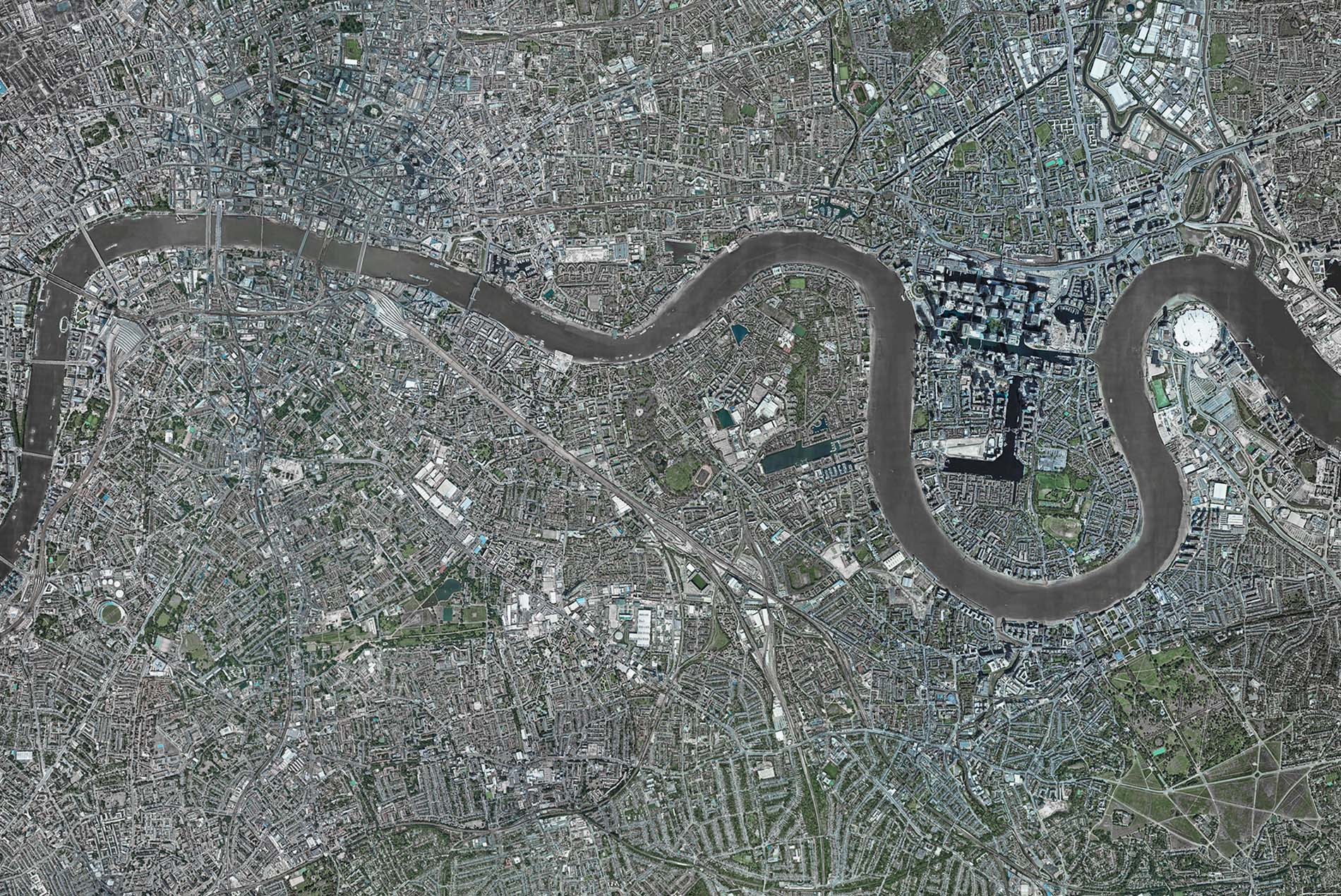
Like a distinctive scar, the Southeastern main line into London Bridge is a two-mile long, raised series of train tracks that stretch 60 metres across at their widest point. Slicing through the London borough of Southwark, the 14-hectare strip of land offers little back to the community.
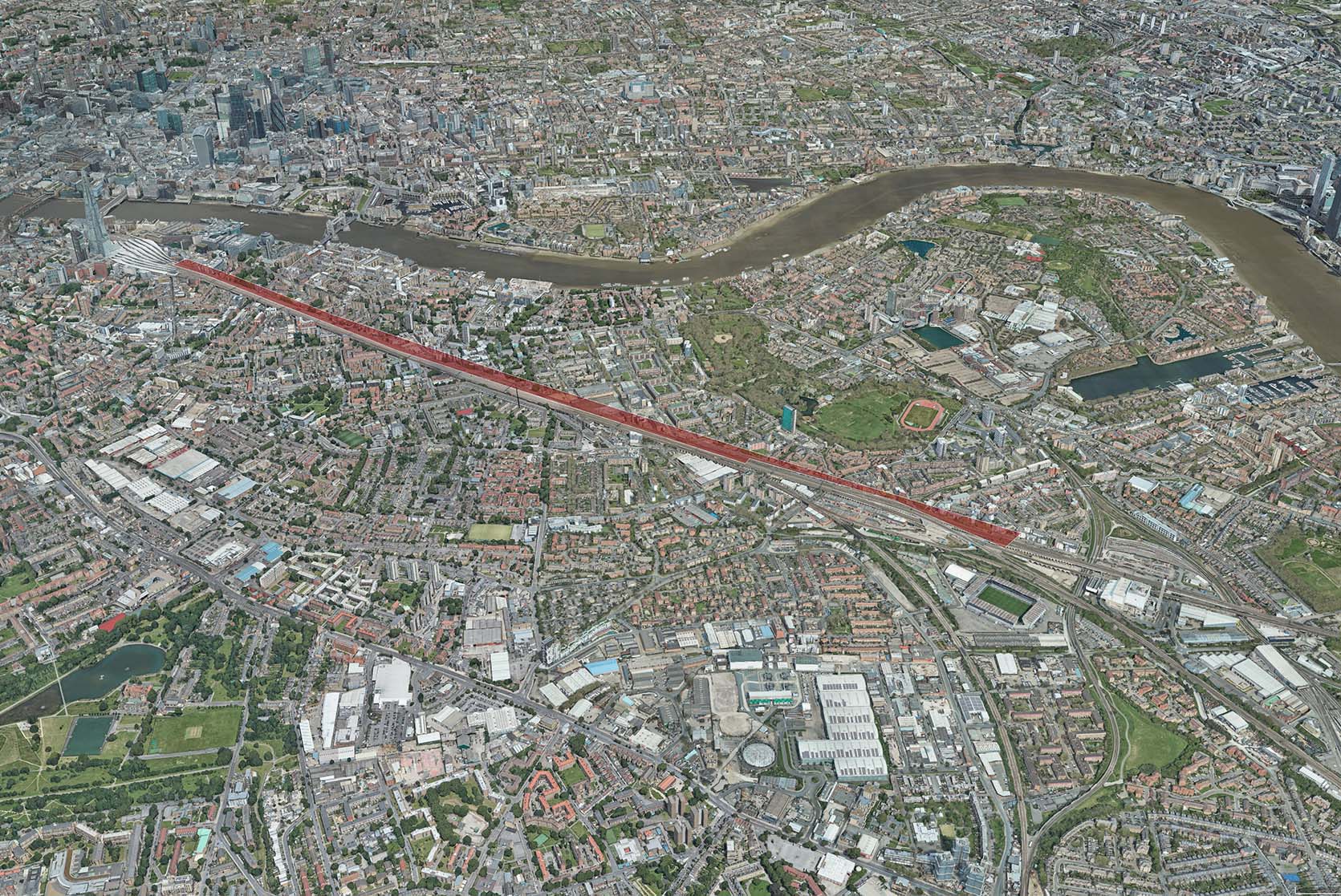
The Brick Arches
A series of rhythmical brick arches hold up most of the train tracks.
The spaces beneath these arches are used sparingly. The vibration from the trains, lack of daylight and less-than-waterproof brick vaults accommodate few practical uses.
The brick arches, which run perpendicular to the tracks, are typically 50 metres long and based on an 8-to-11-metre-wide structural grid. This length adds to the complexity of finding uses for the spaces.
While most are derelict, a select few of these spaces are occupied by tradespeople. Some offer vehicular and pedestrian connections across the divided Bermondsey neighbourhood.
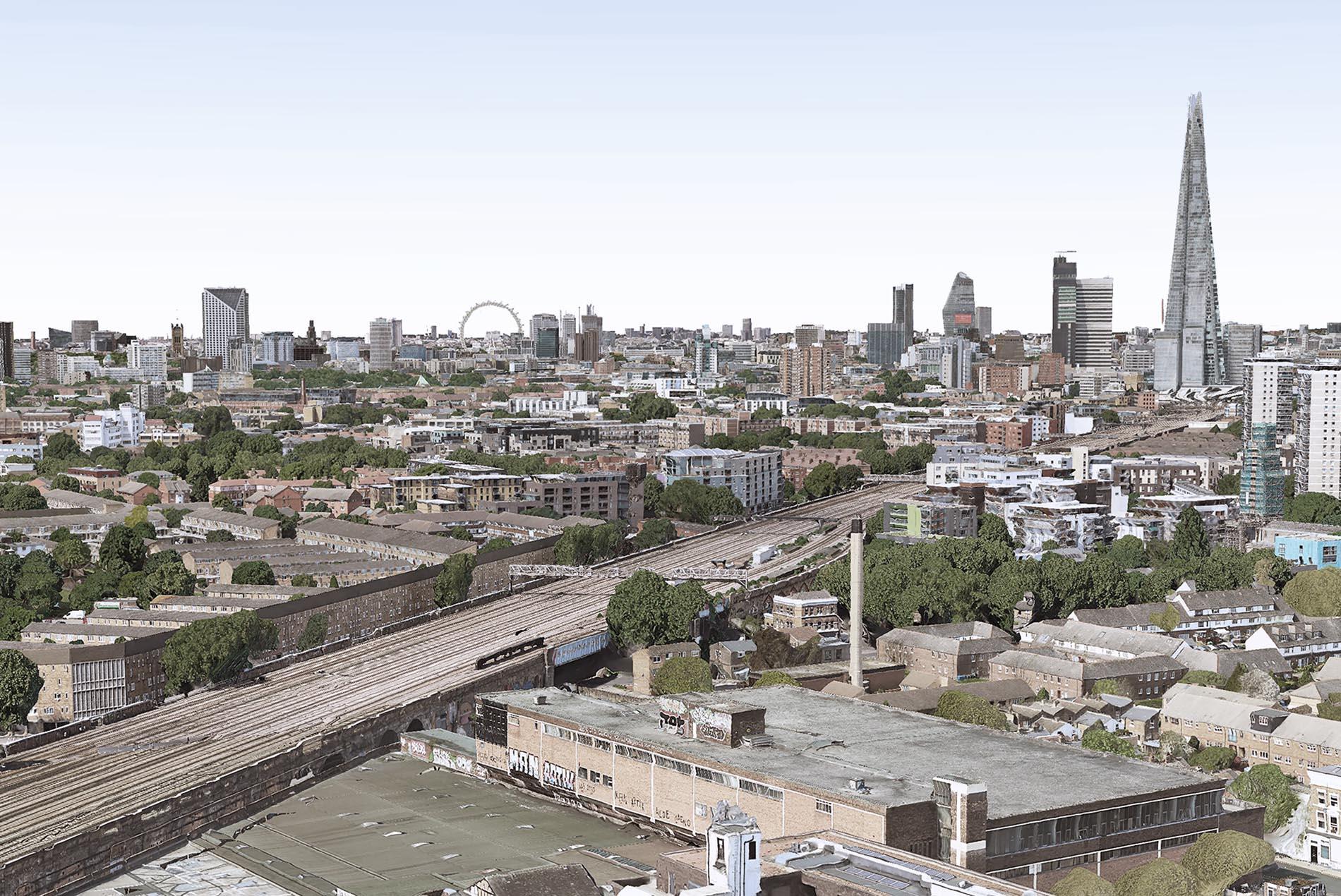
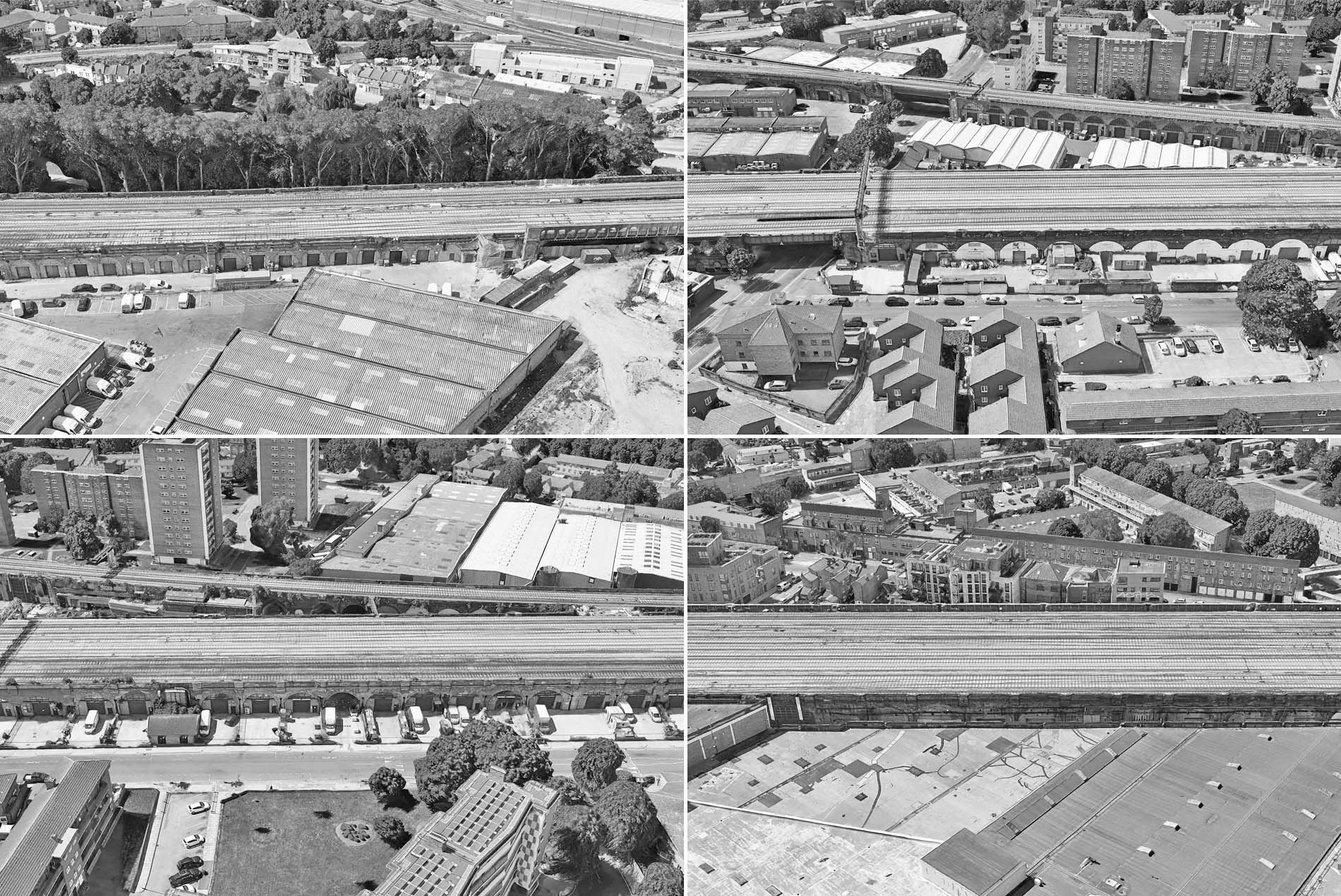
Challenges
- Poor quality spaces
- Lack of connectivity
- Deep plan
- Noise and vibration
- Weatherproofing issues
- Inactive street frontage
- Barrier between communities
- Unsafe feel
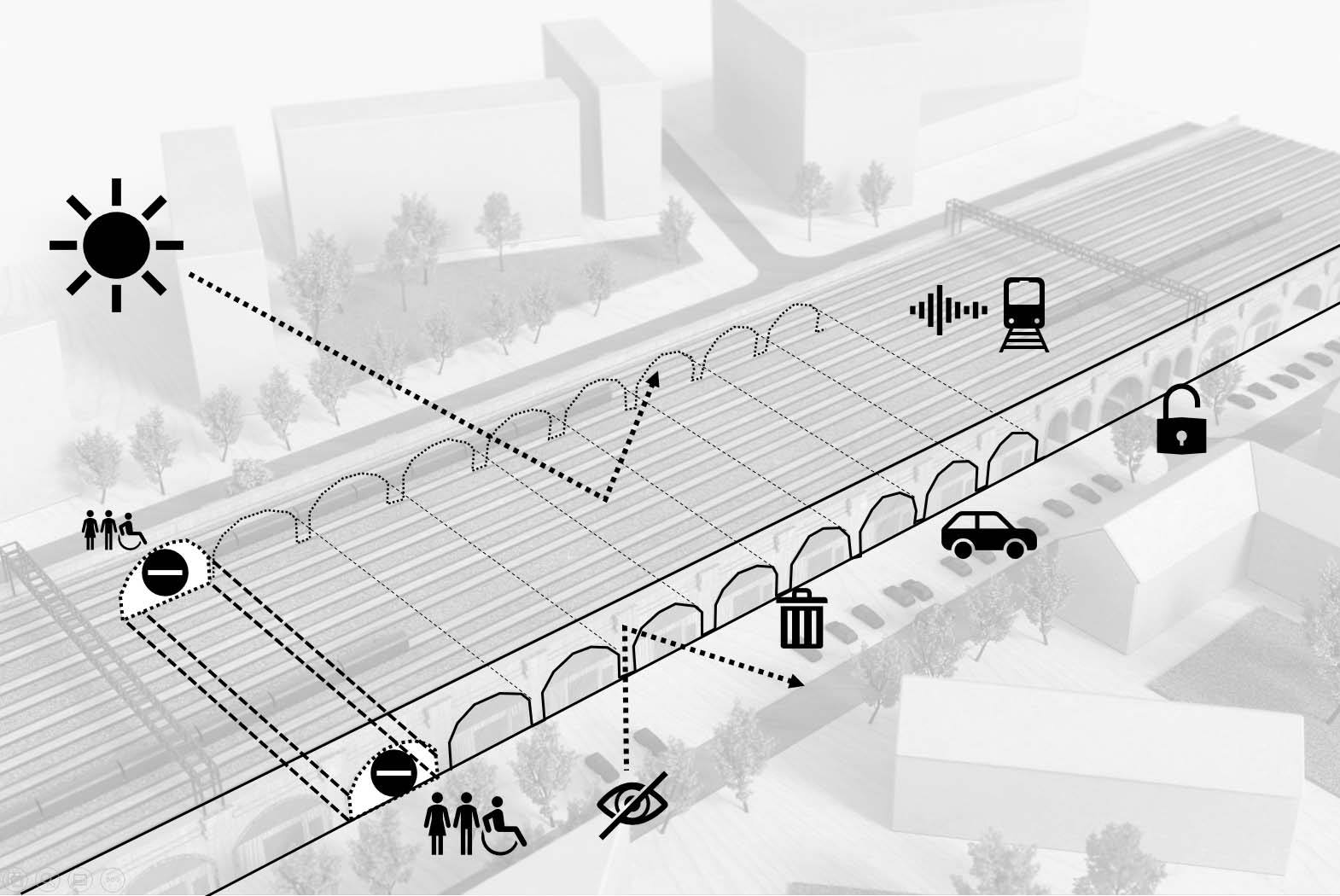
Inspiring London's Next Generation of Makers
Our government’s vision for the future includes creativity and innovation as pillars of the UK economy. Britain’s craftspeople—our tailors, shoemakers, furniture makers, textile designers, potters and more—once were the envy of the world. But no more. There aren’t enough makers. The makerspaces that do exist often are hidden away in industrial estates.
With Brexit now a reality, we need to rethink the future of our maker industry. Yet many Design and Technology (D&T) departments in our schools have been reduced or even eliminated due to funding cuts. This makes the need to teach craftsmanship to our next generation of makers more urgent. We must encourage young artisans to develop their skills. If we succeed, we can influence people to buy more British goods and preserve our position as a global design leader.
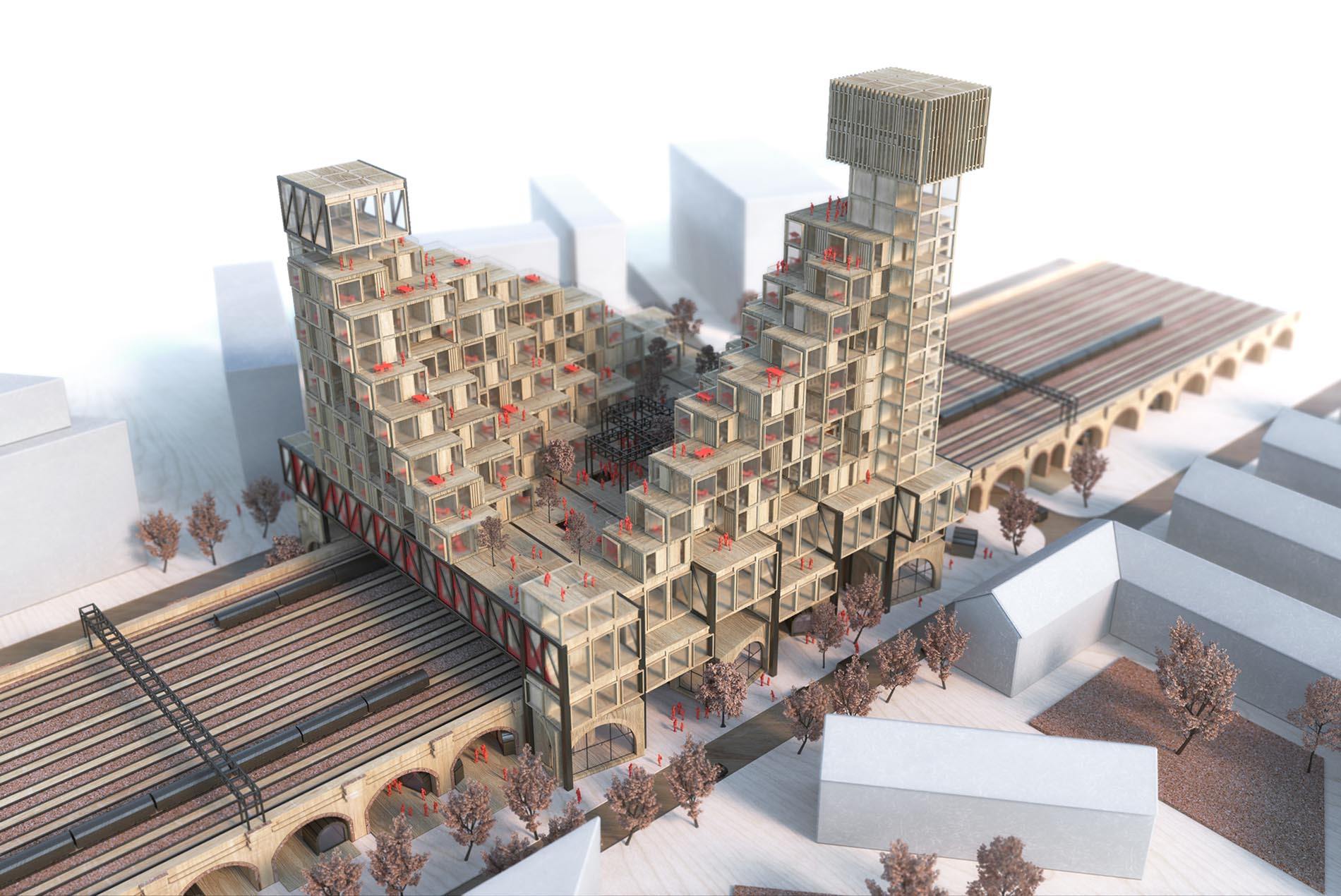
The first step to inspiring London’s next generation of makers is to provide more spaces where they can live and work. Then we can begin to demonstrate the value their skills bring to cities.
To do this I am proposing we look to build above the South Eastern line tracks. This two-mile-long stretch of tracks running through Southwark offer prominent locations to showcase our maker industry. Creating vibrant live-work communities of makers also would provide much-needed housing and public realm benefits for London.
The Maker Deck
A maker deck could span the 50-metre width of the tracks. The maker deck is formed by a series of 7-metre-high trusses centered along the arch grid below, which provide high quality functional workplaces to accommodate a large-scale making community. This height suits most making activities.
The makerspaces can be divided for different uses and to create synergies between trades. The maker community also can take advantage of opportunities to upcycle each other’s materials.
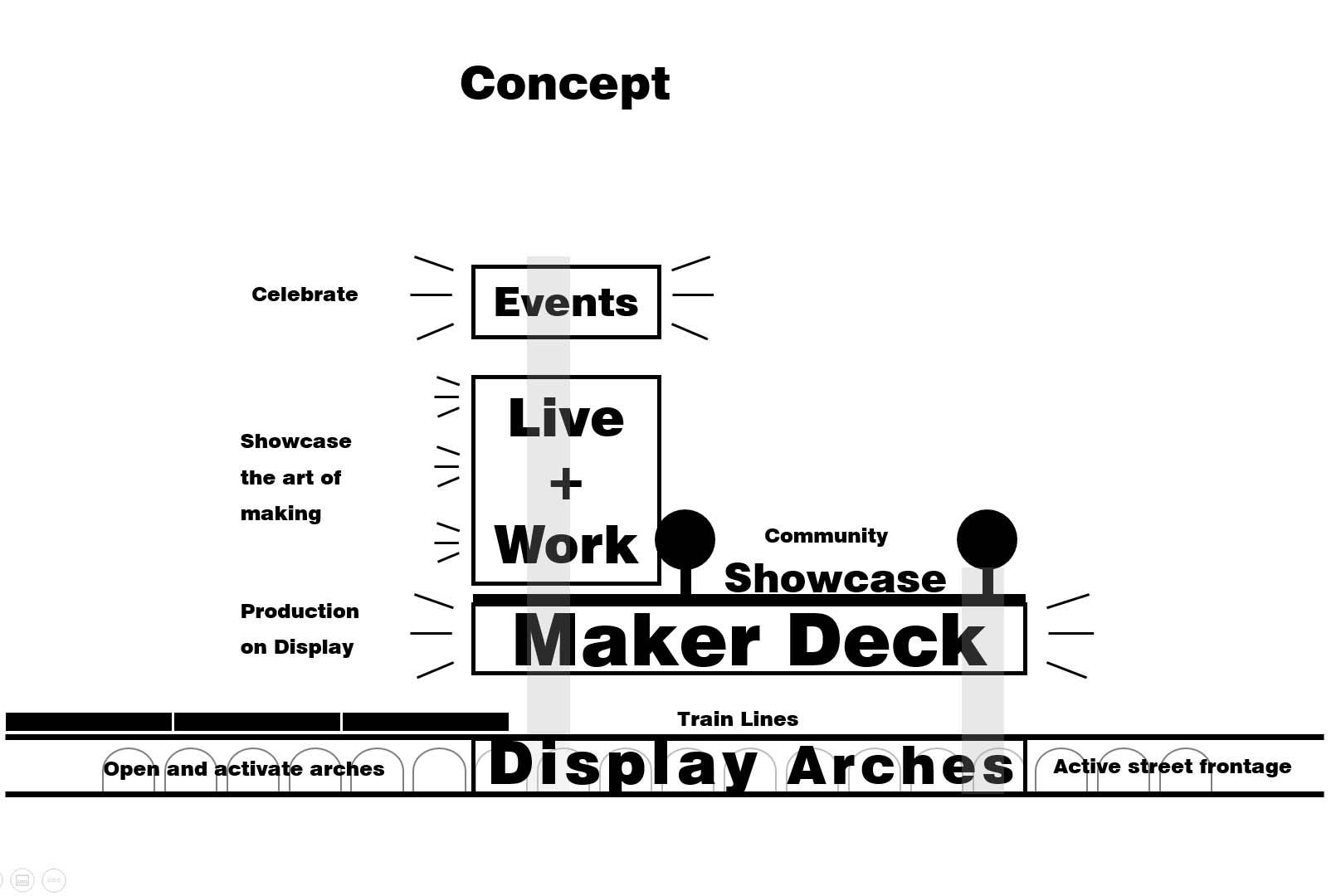
The deck provides prominent track-facing and street-facing elevations that showcase the craftsmanship and activities taking place inside. Before COVID, hundreds of thousands of commuters per day were riding the train in London. We expect to have a quick rise in traffic as pandemic restrictions are lifted. The prominent, elevated makerspaces will allow these commuters to see and appreciate the art of making.
The deck also accommodates service distribution for the homes above, allowing for a clear span below. The services run along the truss lines and into the plant spaces held under the designated arch.
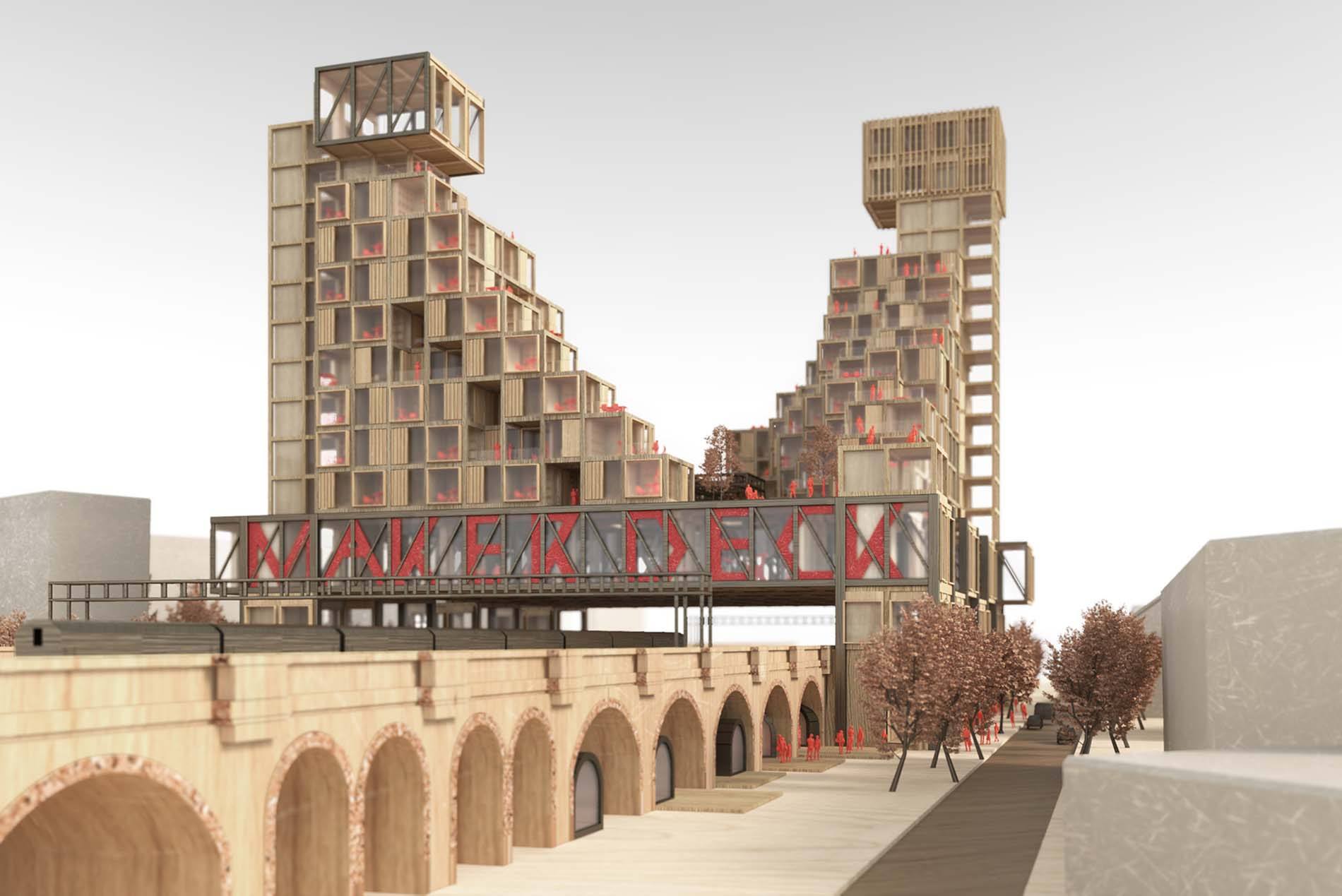
Active Ground
The existing arches will be transformed and opened, creating new ways for pedestrians to pass through. Space under the arches will accommodate art installations and exhibitions. Some also could be used for community storage and deliveries.
Maker retail spaces will line the activated street, providing street-level showcases for the products made within. Streets around the arches will be transformed into vibrant places with a distinct character and community focus.
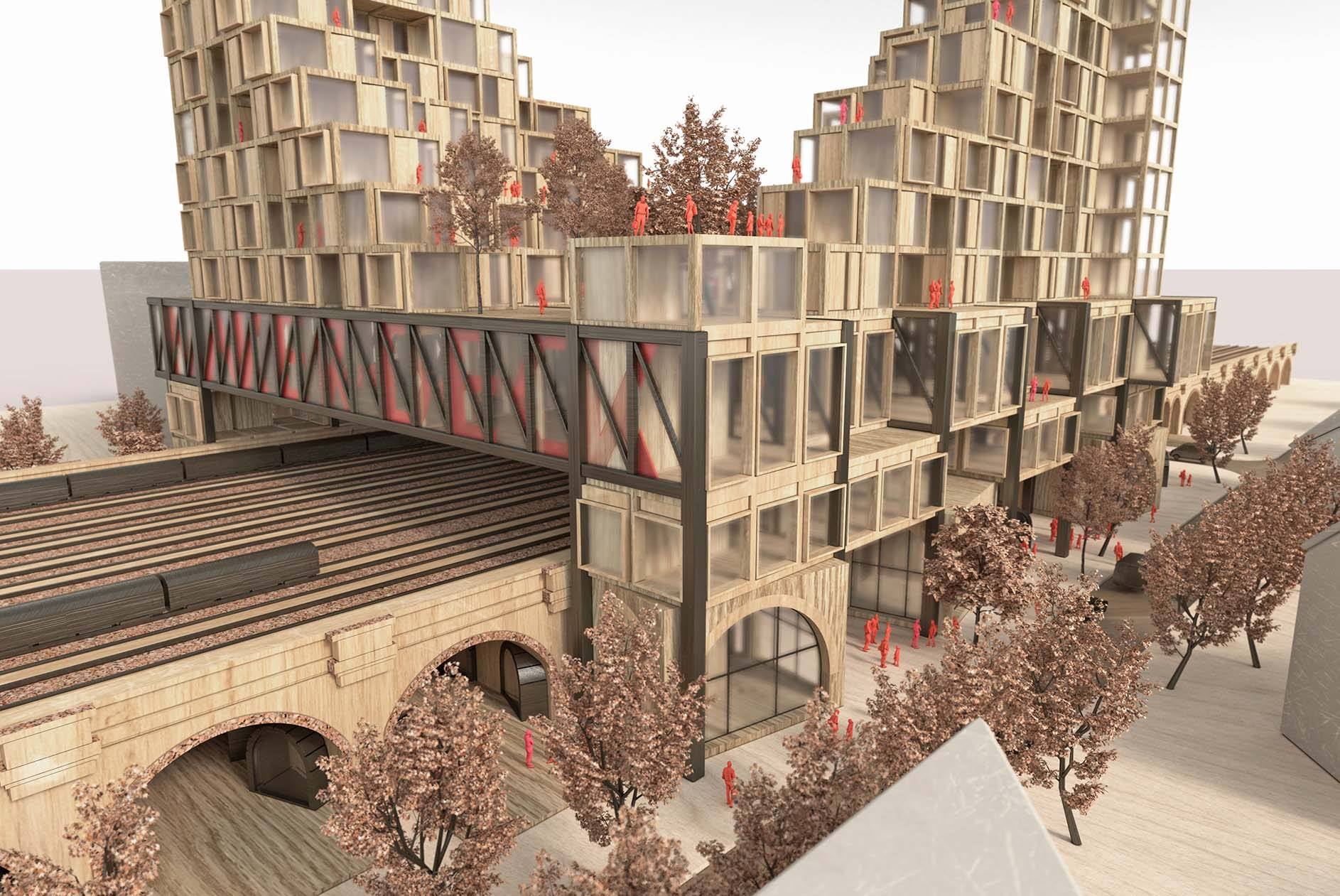
Live-Work Communities
The deck provides a platform for a maker community to live above. The top of the deck provides a landscaped gathering space.
A maker deck garden provides outdoor amenity space for families. It’s also a perfect setting for events like fashion shows or craft fairs. It can be publicly accessible, creating much-needed community space where there currently is none.
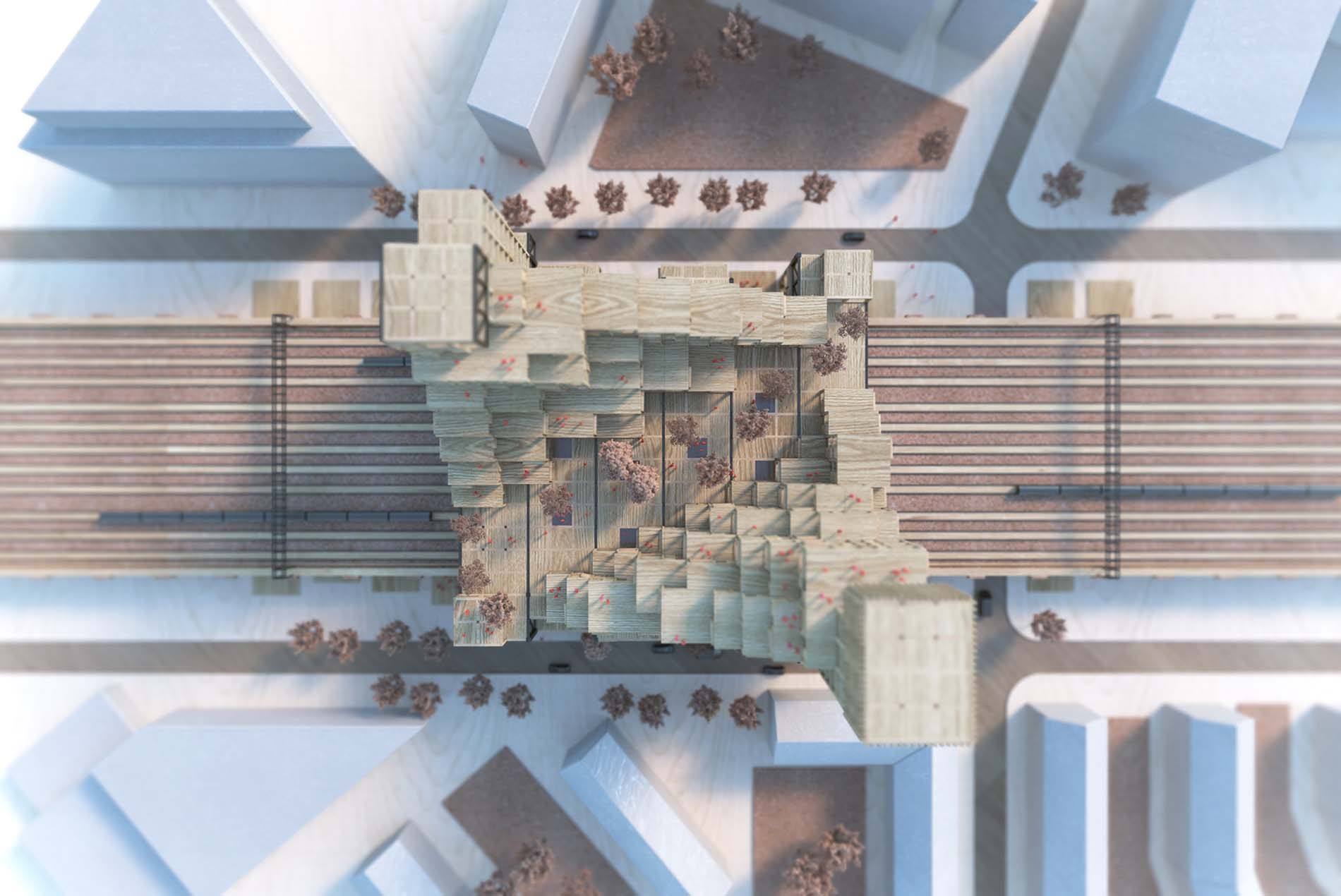
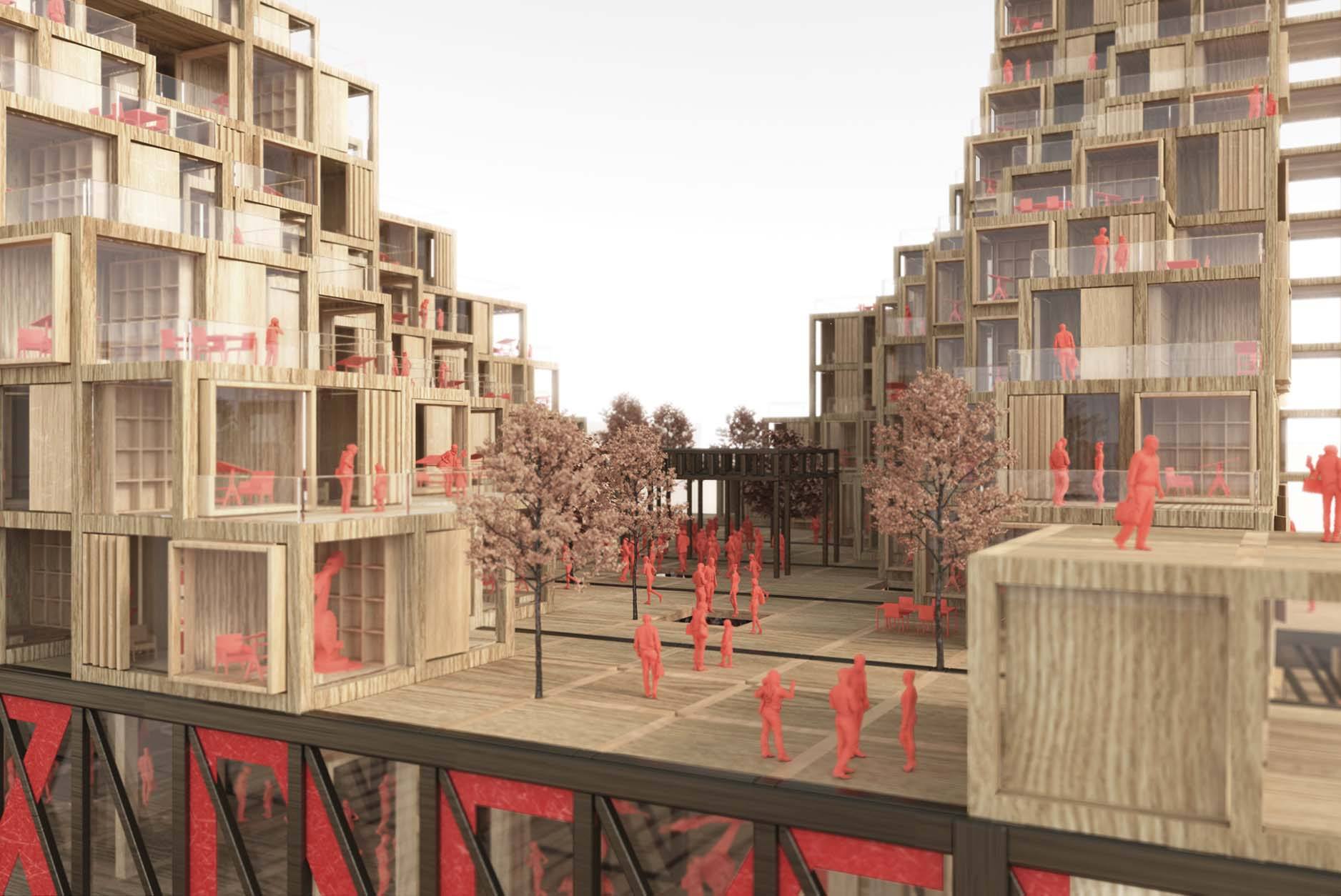
Maker Homes
The homes are arranged across the edges of the deck. Each is equipped with a work-from-home space including a display window that celebrates the art of making.
At the top of the building is exhibition space for use by the community. Offering views along the tracks and across the city, this space provides a symbol reminding people about the importance of the creative industry to London’s future.
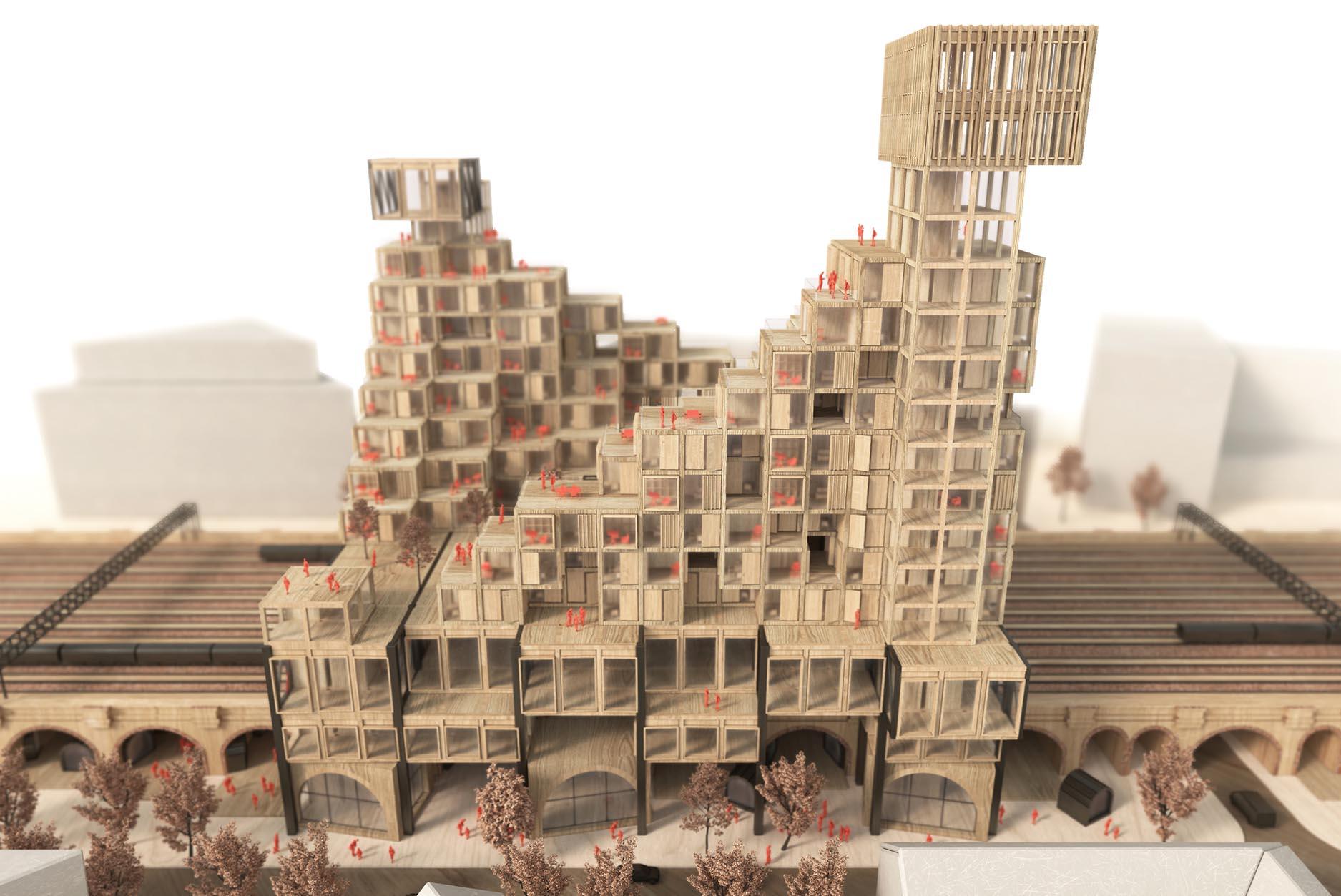
Author David Weatherhead is a design principal in HOK’s London studio. His recent work includes the master plan for the Bollo Lane Mixed-Use Development, a TfL project that will transform underutilized land along the Piccadilly and District London Underground lines into a vibrant live-work community.